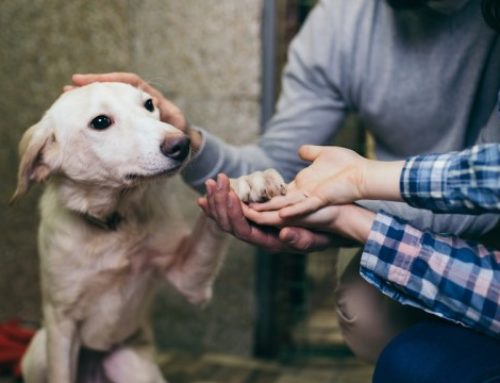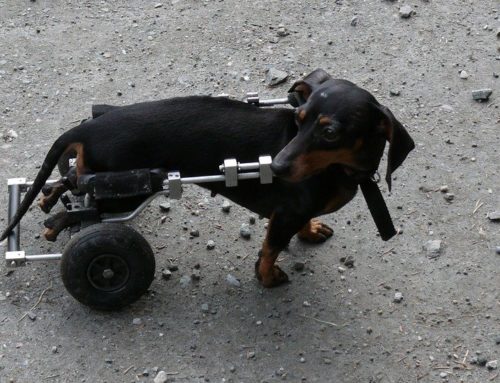TIPS TO TRAIN YOUR DOG TO SAFELY PLAY WITH KIDS
SOCIALIZE YOUR LITTLE ONE
Just as with human beings, a dog’s habits are best formed during the initial years. Between the ages of 8 weeks and 16 weeks, puppies go through a development phase that is vital in shaping their future selves. As a pet parent, it is your responsibility to ensure that your pup encounters as many new situations and people as possible during this period, especially to family members as this will be easier and will give the dog a good dose of confidence.
Generally, that will prepare them for what lies ahead. For those of you who want to train an adult dog, rest assured that this is still very possible. However, the process must be more gradual on your part as compared to getting a puppy to socialize.
RESPECT YOUR DOG’S FEELINGS
It is possible that your dog is afraid of kids; don’t force your pet to approach your kid. Let the meeting happen naturally. If you force your dog to meet your child, then your dog may develop some resentment towards your child and that is the last thing you want. Look here to gain a better understanding of your dog’s feelings and social cues.
USE POSITIVE REINFORCEMENT
Positive reinforcement is one of the best ways in which you can train your dog to behave better around kids. Encourage good behavior from your pet with attention, praise, and treats. Your dog will start associating your kid(s) with good things if you do this often enough. Once this happens, they will naturally start behaving well around children.
USE CRATE TRAINING
Dogs tend to do better around children if there is an escape route. If you crate train your dog in a manner that makes them happy and comfortable in a crate, then they will know that they have their own safe space to go to whenever they feel the need for it. One caveat here is that you must ensure that your child knows that your dog’s crate is off-limits. Pair that with a treat-dispensing toy for crate time and you’re set for success!
TAKE YOUR PET TO THE LOCAL PARK
The best way for a dog to get comfortable with kids is to see as much of them as possible. What better way to do this than at a park? Keep them on a leash and observe from a fair distance at first. Remember, if your dog is not used to kids at all, then sudden exposure to so many kids could overwhelm and intimidate them into behaving badly.
ACT LIKE A CHILD
Children and adults behave very differently. Change things up and try to act like a child for a while. Run around, shout more, move erratically, make exaggerated gestures – in a nutshell, just do what kids do. This will introduce your pet to childlike behavior and help them get acclimated. Of course, whenever you decide to do this, ensure the neighbors aren’t watching as they may think you’ve gone crazy.
TRAIN YOUR DOG TO NOT JUMP UP
Not every visitor to your house will feel comfortable with a dog jumping up at them. Don’t make the common mistake of some pet parents by automatically assuming that everyone would be alright with a “friendly hello.” Moreover, jumping up could be a potentially dangerous move around kids. Your pet could inadvertently knock a young child over. If your dog jumps through when you walk over, then be firm and make it clear that it is not acceptable behavior.
LET THE DOG ACCLIMATIZE TO BABY SOUNDS AND SCENTS
This is particularly relevant for those expecting a baby and anxiously wondering how their pet will react to the new arrival. Let your dog get used to all the baby stuff – bottles, prams, etc. If you can afford it, it would also be worth hiring a professional trainer to help your pet get acclimated to new baby sounds and scents.
ESTABLISH SOME GROUND RULES
Make sure you establish some house rules and stick to them. Do not let your pet eat from your kid’s plate (or vice-versa). Make sure you keep the dog toys away from the kids. Pet toys lack the same safety standards and could be hazardous in the hands of young ones. Whatever house rules you establish, ensure that you stick to them with utmost discipline and no exceptions.
NEVER LEAVE YOUR PET AND CHILD UNATTENDED
This one was deliberately left for last. Hopefully, it will have left the required impact! Surely you have seen and heard about a few cases in which a pet bit a child and the parents have no idea why it happened. There is a simple solution to this; always have both in your sight. Simple! Your pet may not deliberately bite a child, but it may be more of an instinctive reaction to a child doing something the dog simply doesn’t like.






Leave A Comment
You must be logged in to post a comment.